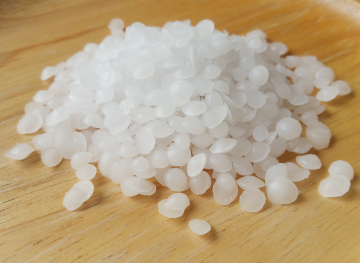

Free Delivery | Same day delivery in select cities
What are emulsifiers and stabilizers?
How many of you have tried putting water and oil together in a glass to see whether they mix? And, how mesmerised were you to see oil making its way back up to float on top of the water? This is because oil molecules are bigger than water molecules. Diving deeper into chemistry, water is a polar molecule, which means it is negatively charged on one end and positively charged on the other. Whereas, molecules that do not have such charge separation are non-polar such as oil. By the solubility principle “like dissolves like”, we know oil and water do not dissolve with each other because one is a polar solvent and the other is a non-polar solvent. Here is where emulsifiers play a role. [1]
In plain and simple terms, emulsifiers are the additives that help two immiscible liquids mix. For instance, water and oil separate when put in a glass but emulsifiers help these liquids mix together in ice cream and salad dressing. Stabilizers, on the other hand, are additives that help preserve the structure of the food. For instance, they prevent water and oil emulsions from separating in ice cream and salad dressings. [2] [3]
Some examples of emulsifiers widely used in the food industry include soy and egg lecithin, mustard, Diacetyl Tartaric Acid Esters of Monoglycerides (DATEM), PolyGlycerol Ester (PGE), Sorbitan Ester (SOE) and PG Ester (PGME). And, some commonly used stabilizers in the food industry include sodium alginate, sodium carboxymethyl cellulose (CMC), guar gum, locust bean gum, carrageenan, gelatin, and pectin. [4] [5] [6]
What are food additives?
The Food Safety and Standards Authority of India (FSSAI) has defined food additives as “any substance not normally consumed as a food by itself and not normally used as a typical ingredient of the food, whether or not it has nutritive value, the intentional addition of which to food for a technological purpose in the manufacture, processing, preparation, treatment, packing, packaging transport or holding of such food results, or maybe reasonably expected to result (directly or indirectly) in it or its byproducts becoming a component or otherwise affecting the characteristics of such foods.” Food additives are added to food intentionally for the “purpose of maintaining or improving the keeping quality, texture, consistency, appearance, and other technological requirements.”
Apart from emulsifiers and stabilizers, other food additives include preservatives, colour, artificial sweeteners, anticaking agents, and flavour enhancers amongst others. Happy Ratio does not use these other food additives.
Applications of emulsifiers and stabilizers
Emulsifiers and stabilizers are required together because stabilizers play a role in confirming the long-term stability of the emulsified state that has been achieved with the use of emulsifiers. Their practical use in the food industry is for:
So, which emulsifiers and stabilizers do Happy Ratio use and why?
Happy Ratio only uses well researched, studied and approved emulsifiers and stabilizers to ensure that its secret blend of 39 essential nutrients, which includes every macro and micronutrient, is healthy and tasty. Out of each serving, only 1.62% make up CMC, Xanthan Gum and Sunflower Lecithin. They help ensure that the healthy vegetable oils in Happy Ratio’s composition do not separate when they are blended with water or milk.
The three ingredients that are all approved by FSSAI for their use as food additives under the Food Safety and Standards (Food Standards and Food Additives) Regulations, 2011 have the following properties:
Conclusion
As seen in the blog, the properties of emulsifiers and stabilizers are manifold. While these food additives are used to give the food products the right form, structure, volume and texture by mutually working with each other, they also happen to contribute to benefit us in more ways than one. Not to forget, they are safe to consume otherwise the regulatory authorities all over the world, including the FSSAI, would not permit their use.
Note: While Happy Ratio uses FSSAI-approved emulsifiers and stabilizers to give you a rich, creamy and healthy shake with each serving, it avoids using any preservatives - a type of food additive - or artificial colours. You can grab your favourite Happy Ratio flavour and get a Try-It-All Sampler Pack free here. Use code TRYITALL10 to avail this offer.
References:
[1] https://psiberg.com/polar-vs-nonpolar-solvents/
[2] https://simple.wikipedia.org/wiki/Emulsifier
[3] https://en.wikipedia.org/wiki/Stabiliser_(food)
[4] https://foodandnutrition.org/november-december-2017/food-additives-emulsifiers/
[5] https://www.sciencedirect.com/topics/medicine-and-dentistry/stabilizing-agent
[6] https://en.wikipedia.org/wiki/International_Numbering_System_for_Food_Additives
[7] https://www.britannica.com/science/emulsifier
[8] https://www.afsuter.com/application/emulsifiers-stabilisers-thickeners-gelling-agents/
[9] https://www.foodingredientfacts.org/shelf-stability-more-important-now-than-ever/
[10] https://www.eufic.org/en/whats-in-food/article/common-uses-of-emulsifiers-in-food
[12] https://foodsafetyhelpline.com/what-are-stabilizing-agents-what-does-fssai-say/
[13] https://www.sciencedirect.com/science/article/pii/S2352364621000055
[14] https://foodadditives.net/thickeners/cellulose-gum/
[15] https://www.ncbi.nlm.nih.gov/pmc/articles/PMC4415970/
[16] https://en.wikipedia.org/wiki/Viscosity
[17] https://foodadditives.net/thickeners/xanthan-gum/
[18] https://cleanfoodmovement.in/e471-e322-e442-and-e476-are-they-safe/